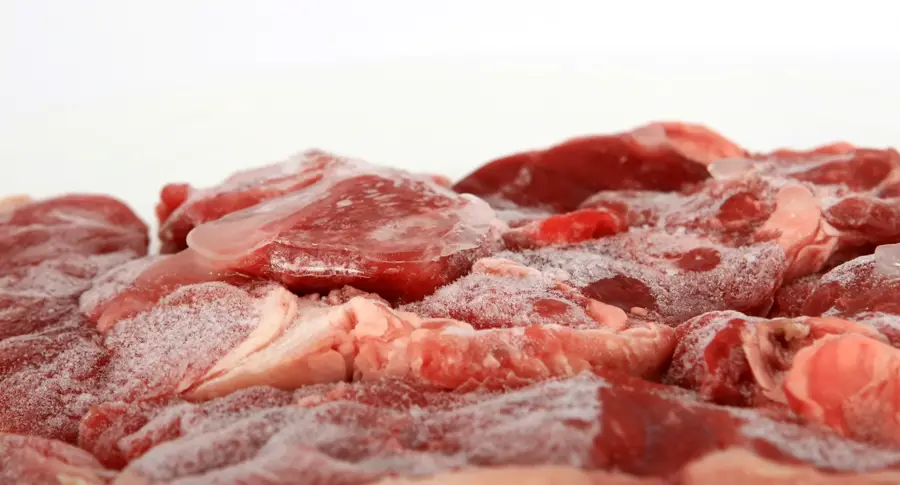
The freshness of products is very important in culinary work.
Products for cooking have to be as fresh as possible.
The freshness of food ingredients will reflect in a prepared meal.
Freezing of food commodities is one of the means to maintain quality and freshness.
Avoidance of deterioration of ingredients for cooking is done by freezing or chilling.
Chefs must do all they can to prevent stale food products.
The passion for culinary work can be tested by various tasks that are involved.
Culinary jobs can prove to be tough through these tasks that need to be attended to — so any task that helps to maintain food quality should be done thoroughly.
The Frozen Item
Have you seen a frozen product?
Do you know the reason a product is being frozen?
This method of preservation of items has come a long way.
When something is refrigerated, one can be rest assured of its preservation.
Items can stay intact under refrigeration for days, weeks, or months as long as there is a steady supply of electricity.
The confidence that refrigerators have brought is awesome!
If you have an item to refrigerate, you’ll be at ease, knowing that there is an apparatus to get the job done for you.
Part of the activities that take place in kitchens is refrigeration.
Cooking is not the only job done in professional kitchens.
Making menus is another job entirely.
Documentation of items in kitchen work isn’t the only job that needs to be done.
Freezing or refrigeration of items is another vital part of work done in the culinary business.
If we don’t have the means to preserve commodities used in cooking, there’ll be an incurrence of loss of revenue.
When supplies are brought in, items are sorted out accordingly, and those that need to be frozen, are refrigerated.
In some kitchens, certain butchery tasks are carried out by chefs, due to the size of the establishment, deboning of chicken, filleting of fish, etc., are done, then arranged and prepared for refrigeration.
Refrigeration of items constitutes part of day-to-day tasks that take place in commercial kitchens.
Attention given to products before they are frozen shows the importance chefs apply to any task that takes place in catering activities.
The Defrosting Process
Sometimes, when we intend to do something, we plan ahead. If there is a need for a person to be at a place the next day, he/she plans ahead.
If you have a meeting with someone at a particular location, you work out the route to take and get to the location, (by planning ahead).
Planning in advance for something to be done, makes one organized in doing things.
Thinking out things in advance helps for better results to be achieved.
The product was fresh prior to freezing. It’s important that after thawing, the item should remain fresh.
Frozen Vegetables: This item should be allowed to defrost thoroughly before it’s used for cooking.
Frozen meat items should be allowed to defrost properly for these reasons:
Marinating: Roasting is one area we do our cooking. The aroma or smell we perceive during this process is lovely.
The sight of that item when roasted is captivating… That golden brown look of the roast chicken can be inviting…
The frozen item needs to defrost properly, so that, when marinating prior to roasting, the spices will get into the meat well.

Butchery: Carcass dissection is done to service our food needs. Aside from machine butchery, Frozen items should be allowed to thaw very well so dissection can be done easily.
Deboning/Filleting: The boneless chicken or fillet fish looks nice when we have them and want to cook them for a meal.
For easy deboning or filleting, frozen poultry, fish, etc., should be allowed to defrost very well.
Most times, the thawing of frozen products takes place in the kitchen.
If you’re going camping with friends, and you need to have a barbecue, or you want to have an outdoor event in your home inviting family and friends, you should plan the defrosting of frozen items for your barbecue beforehand.
Below are other methods one can use to do thawing of frozen products in a home or commercial kitchen:
Microwave Thawing: This method is done particularly in home kitchens. When thawing is not done in advance, and there is an urgent need to defrost an item needed for cooking, let’s say frozen chicken, for instance — the microwave is used to defrost the item.
This frozen product in the microwave, could take between zero hours to 1 or more hours to completely defrost.
Note: When using the microwave to thaw a frozen product, and you need to place the item in a bowl, use a plastic bowl.
Don’t place frozen items into a stainless steel bowl, or any form of metal bowl when defrosting or reheating food in the microwave. The transference of heat from the wave will clash with the metal and cause damage. Ensure that when defrosting an item in the microwave, a plastic bag or container is used.
Thawing Of Items Inside The Chiller: This method of defrosting an item in a chiller, is done in domestic and commercial kitchens.
Frozen products could be kept in the chiller for hours, a day or more to defrost.
Note: If there are items in the refrigerator like vegetables, and you need to defrost something in that same chiller, ensure the frozen product is in a tray or bowl.
Place the frozen item on the downside or lower base of the refrigerator. Raw meat products shouldn’t be kept on the upper rack in the refrigerator, to avoid substance from the raw meat dripping into vegetables or cooked food.
Room Temperature Thawing: This method applies to when a frozen product is kept somewhere in the kitchen to defrost.
Note: When doing this method of thawing in a domestic kitchen, put the frozen product in a place where it will be out of reach of children.
Using fresh products for our cooking will ensure a delicious and palatable meal. Frozen items should be defrosted thoroughly before their usage for cooking.

Benedict Ohia is a culinary chef with over 15-years experience in the catering industry.

